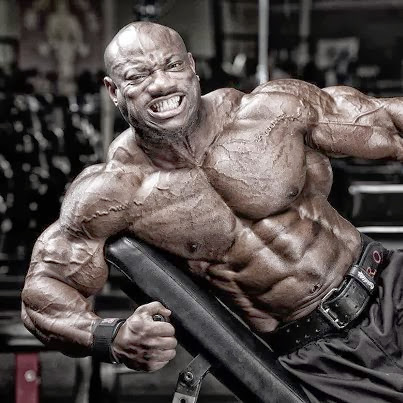Burn Fat With Cardio Exercises:
The average American over the age of 30 will gains 5 pounds a year.
Some estimate that 60 percent of our population is overweight. Of
course, the best way to avoid obesity is to fight back temptation and
never eat those unwanted calories in the first place. Don't worry there
is a way to keep weight gain at bay, and that is through EXERCISE!!!
Whether it's pounding the pavement, peddling miles on the bike, or
climbing those stairs that seem to go nowhere, it's all about cardio
exercise. But other than a sweaty t-shirt, what do you have to show for
your workout? Ripped abs, tone arms, and if your exercising the right
amount of time you could reap the full health benefits of cardiovascular
fitness.
Cardiovascular exercise is any type of exercise that
increases the work of the heart and lungs. From running and walking, to
swimming, elliptical cross-training, biking, Stairmaster, and rowing;
the physical benefits of cardio exercise include:
• Reduced risk of heart disease
• Improved muscle mass
• Improved heart function
• Reduced risk of osteoporosis
• Improved blood cholesterol and triglyceride levels
The American College of Sports Medicine and the CDC recommend, for
health, that adults should accumulate 30 minutes of moderate-intensity
physical activity on most days of the week, and to improve
cardiovascular endurance, they recommend 20 to 60 minutes on three to
five days per week."
Top 5 Best Cardio Excersise:
Running:
Running is one of best activities you can do. It doesn't require
special equipment and you can do it anywhere. Best of all, you burn
serious calories, especially if you add hills and sprints. A 145-lb
person can burn 300 (at 5.2 mph) in 30 minutes. The downside is you need
to watch your knees and ankles for any discomfort or pain.
Bicycling:
Outdoors or indoors, cycling gives some great cardio. Using all the
power in your legs, you'll increase endurance while burning lots of
calories, anywhere from 250-500 in 30 minutes, depending on how fast you
go and how high your resistance is.
Elliptical Trainer:
The elliptical trainer is a great way to build endurance while
protecting your aching joints from high impact activities. Plus, if you
use one with arms, it's just like using a cross-country ski machine. The
elliptical trainer is also a good choice for runners looking for a
break from pounding the pavement. A 145-lb person burns about 300
calories in 30 minutes.
Cross-Country Skiing:
Whether
you're on a gym machine or swooshing over miles of snow, cross-country
skiing is an incredible cardio exercise. What makes it so great is that
it involves your upper and lower body, which means it doesn't take much
to get your heart rate soaring. A 145-lb person burns about 330 calories
during 30 minutes of skiing.
Swimming:
Swimming, like
cross-country skiing, is a full body exercise. The more body parts you
involve in your workout, the more calories you'll burn. Spend 30 minutes
doing the breaststroke and you'll burn almost 400 calories. Best of
all, your joints are fully supported so you don't have to worry about
high-impact injuries.
Turn Your Workouts into Fat-Burning and Fun Activities that Give You Results.

Always give yourself a bit of a head start into any program. This means
that if you normally push yourself to just complete 20 min on exercise
like stepper or bike and are really tired at the end, it is unlikely
that you can progress positively. Try cutting back the time or the
intensity of the exercise before trying on a progression program and
work up to your previous best. This will give you added recovery and
added confidence for your next workouts so that you're able to break
through and improve.
In general it is better to progress by
increasing the intensity or the time completed very gradually over time.
Always keep in mind that health fitness is and should be a long-term
goal. There's always time to break your personal best. Better you hold
back and enjoy the exercise routine and progress slowly as compared to
constantly pushing it to your limits. Not only will you be better
recovered but you'll also learn to associate fun and freedom with
exercise. This should be your primary concern.
Work out with a
friend or group. Burning calories with a friend will help pass the time
faster, and you may even both get better results. And if you know that
another person is counting on you to show up, you may be less likely to
skip a workout. Activities like spinning or jogging with a group are
ways to help burn calories while keeping your mind on other things.
Always keep an exercise diary. This will ensure that you're on track
and getting results by giving you feedback. But will also give you the
satisfaction ok knowing that a year ago you could only run 3 kilometers
while now you can easily run 7. Writing it down tells your mind that
you're serious.
Burn Optimal Calories, knowing how many
calories that specific activities can burn during a session can give you
a better idea of which ones you may want to include in your workout.
Some activities may actually burn more calories than you thought.
Running 9 mph 501
Running 7.5 mph 418
Ski Machine 317
Bicycling with moderate effort 267
Running 5 mph 267
Circuit Training 267
Stair climber 200
Swimming 200
Grocery Shopping 117
Brisk Walking 150
Weight Training 100
Sleeping 30














